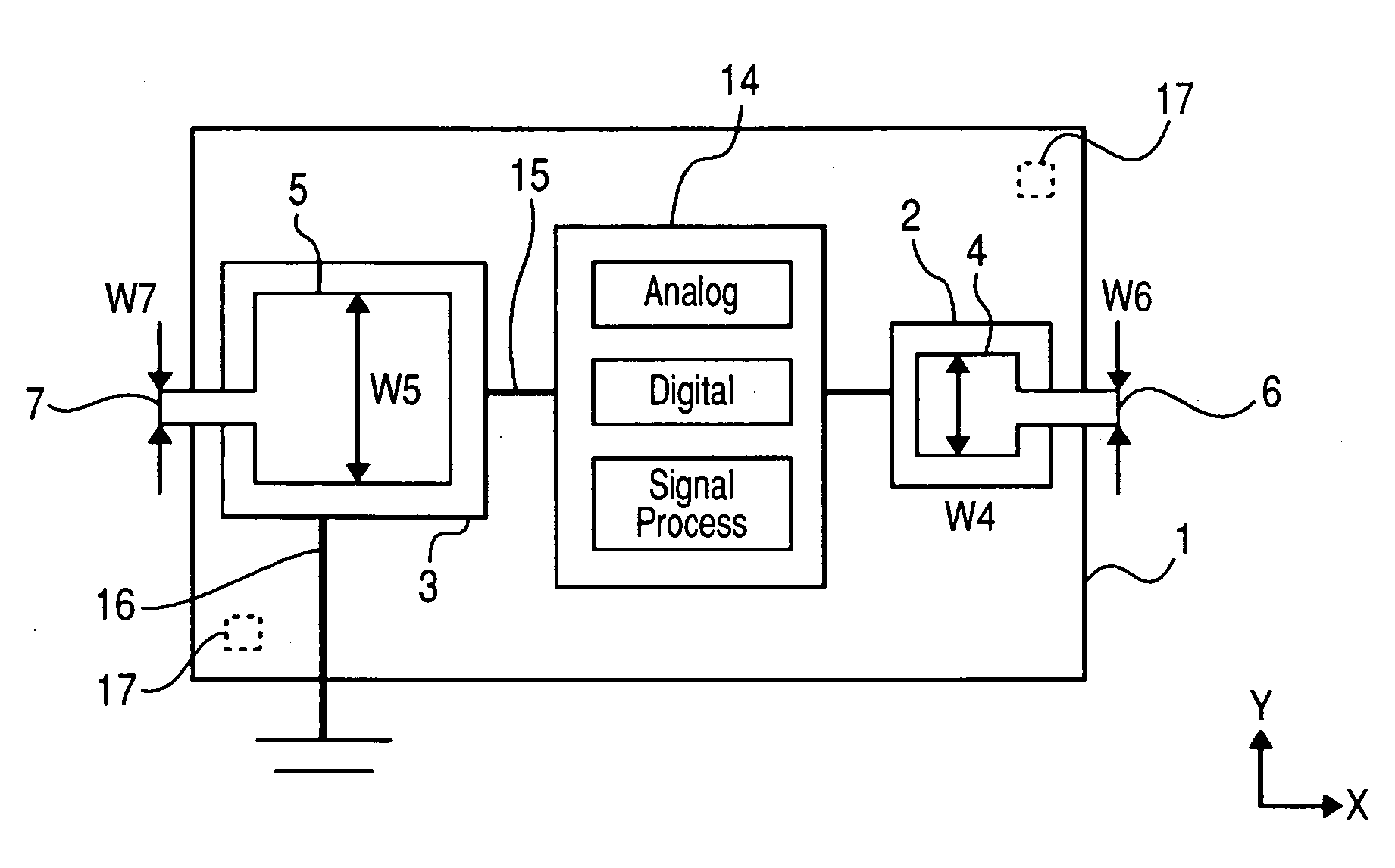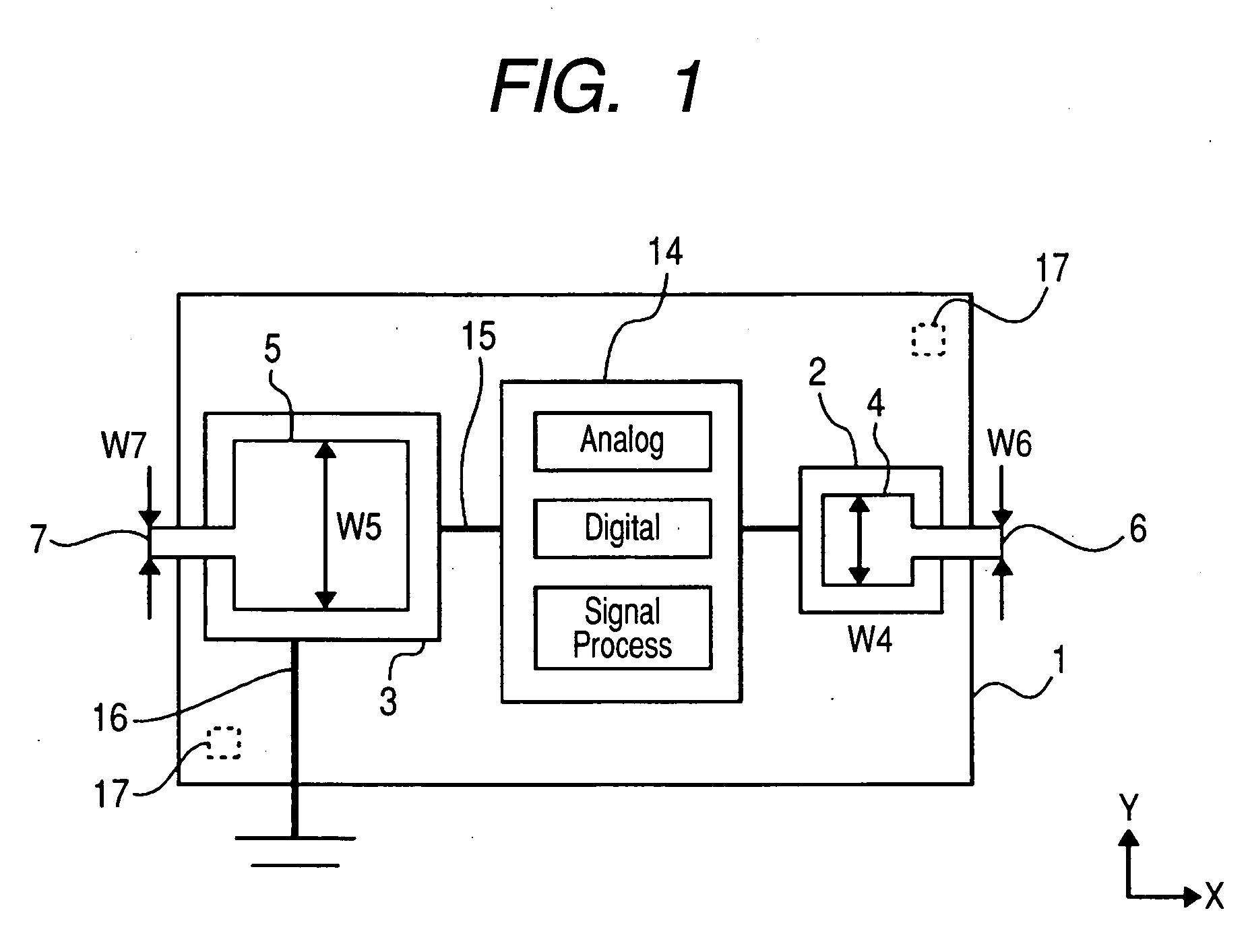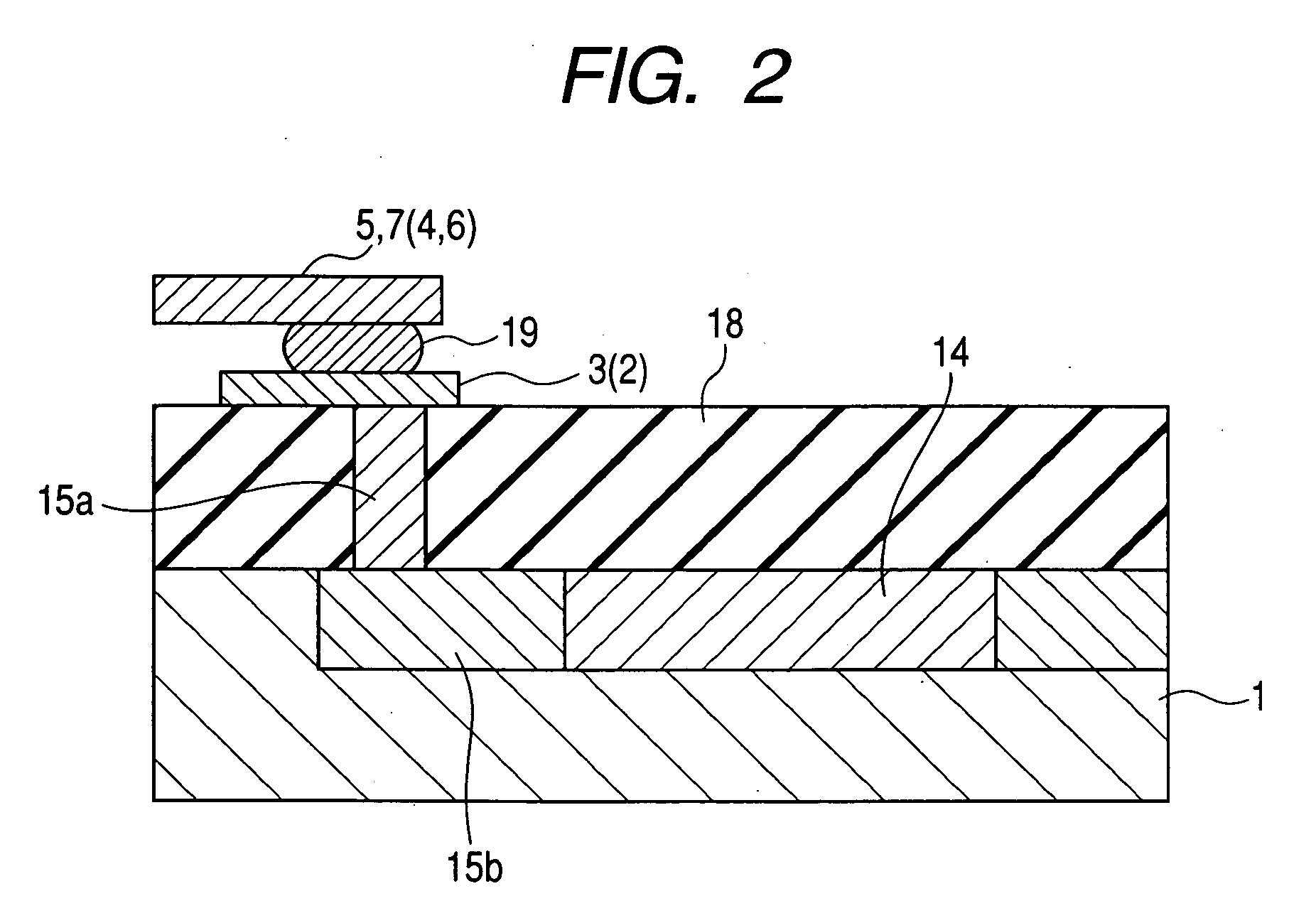RFID tag
- Summary
- Abstract
- Description
- Claims
- Application Information
AI Technical Summary
Benefits of technology
Problems solved by technology
Method used
Image
Examples
embodiment 1
[0058]With reference to FIG. 1 through FIG. 4, the following will now explain one embodiment of the present invention. FIG. 1 is a plan view showing a configuration example for an RFID tag in accordance with one embodiment of the present invention. On a rectangular semiconductor chip (RFID chip) 1, an electrode 2 for hot contact that is not connected to the earth potential of a semiconductor chip, an electrode 3 for earth contact that is connected to the earth potential of the semiconductor chip, an electrode 4 for hot contact of an antenna, an electrode 5 for earth contact of the antenna, a hot draw-out conductor 6 of the antenna, and an earth draw-out conductor 7 of the antenna are formed. The planar shape of each of the electric contacts 4 and 5 of the external antenna is encompassed by the planar shape of each of the electric contacts 2 and 3 of the semiconductor chip. That is to say, the size of the rectangular electric contact 4 is smaller than the plane of the rectangular ele...
embodiment 2
[0069]Another embodiment of the present invention will now be explained with reference to FIG. 6. FIG. 6 is a plan view showing the configuration of an RFID tag in accordance with another embodiment of the present invention. The RFID tag of this embodiment differs from the embodiment of FIG. 1 in that connecting conductors are all circular. That is, an electrode 52 for hot contact that is not connected to the earth potential of a semiconductor chip, an earth contact electrode 53 that is connected to the earth potential of the semiconductor chip, an electrode 54 for hot contact of an antenna, and an earth contact electrode 55 of the antenna all have a circular-planar shape. The width W7 of an earth draw-out conductor 7 of the antenna in the Y direction is smaller than the size (diameter D5 of circle) of an electric contact 5. Similarly, the width of a hot draw-out conductor 6 of the antenna in the Y direction is smaller than the size of an electric contact 4.
[0070]In addition to the ...
embodiment 3
[0071]Yet another embodiment of the present invention will now be explained with reference to FIG. 7. FIG. 7 is a plan view showing the configuration of an RFID tag in accordance with yet another embodiment of the present invention. The RFID tag of this embodiment differs from the embodiment of FIG. 1 in that all connecting conductors have a hexagonal shape, one of polygons. That is, an electrode 62 for hot contact that is not connected to the earth potential of a semiconductor chip, an earth contact electrode 63 that is connected to the earth potential of the semiconductor chip, an electrode 64 for hot contact of an antenna, and an earth contact electrode 65 of the antenna all have a hexagonal-planar shape. The width of a hot draw-out conductor 64 of the antenna in the Y direction is smaller than the size (width in X and Y directions) of the electric contact 62. Similarly, the width of earth draw-out electrode 65 of the antenna is smaller than the size of the electric contact 63.
[0...
PUM
 Login to View More
Login to View More Abstract
Description
Claims
Application Information
 Login to View More
Login to View More - R&D
- Intellectual Property
- Life Sciences
- Materials
- Tech Scout
- Unparalleled Data Quality
- Higher Quality Content
- 60% Fewer Hallucinations
Browse by: Latest US Patents, China's latest patents, Technical Efficacy Thesaurus, Application Domain, Technology Topic, Popular Technical Reports.
© 2025 PatSnap. All rights reserved.Legal|Privacy policy|Modern Slavery Act Transparency Statement|Sitemap|About US| Contact US: help@patsnap.com



